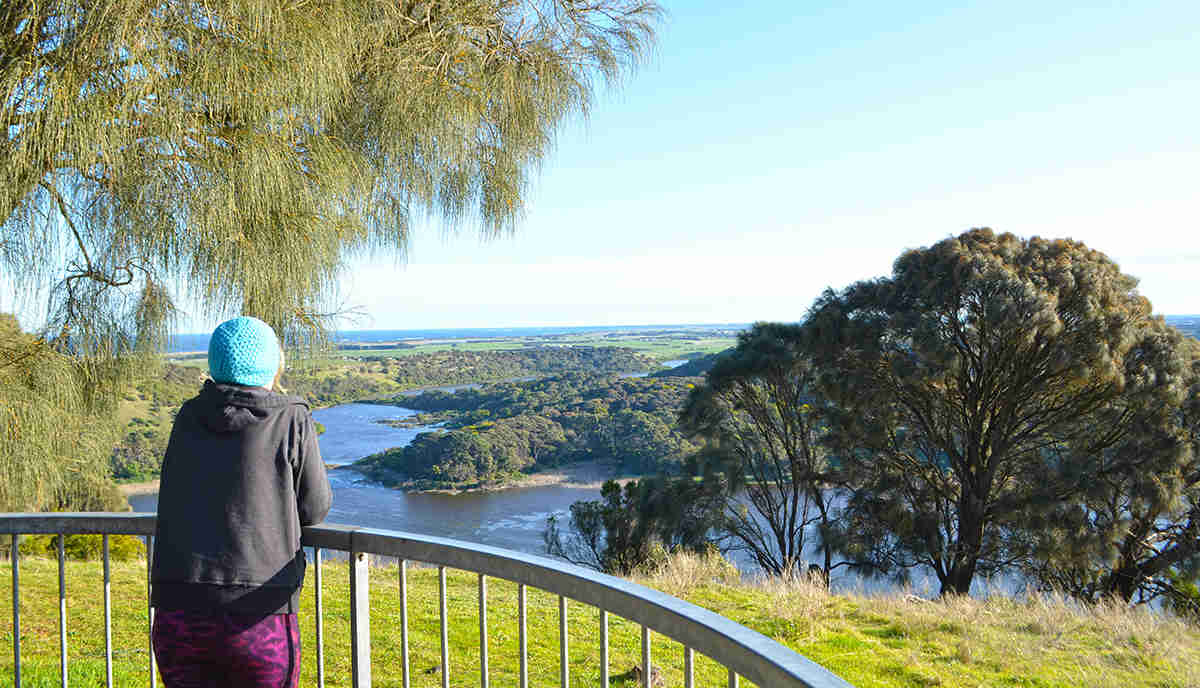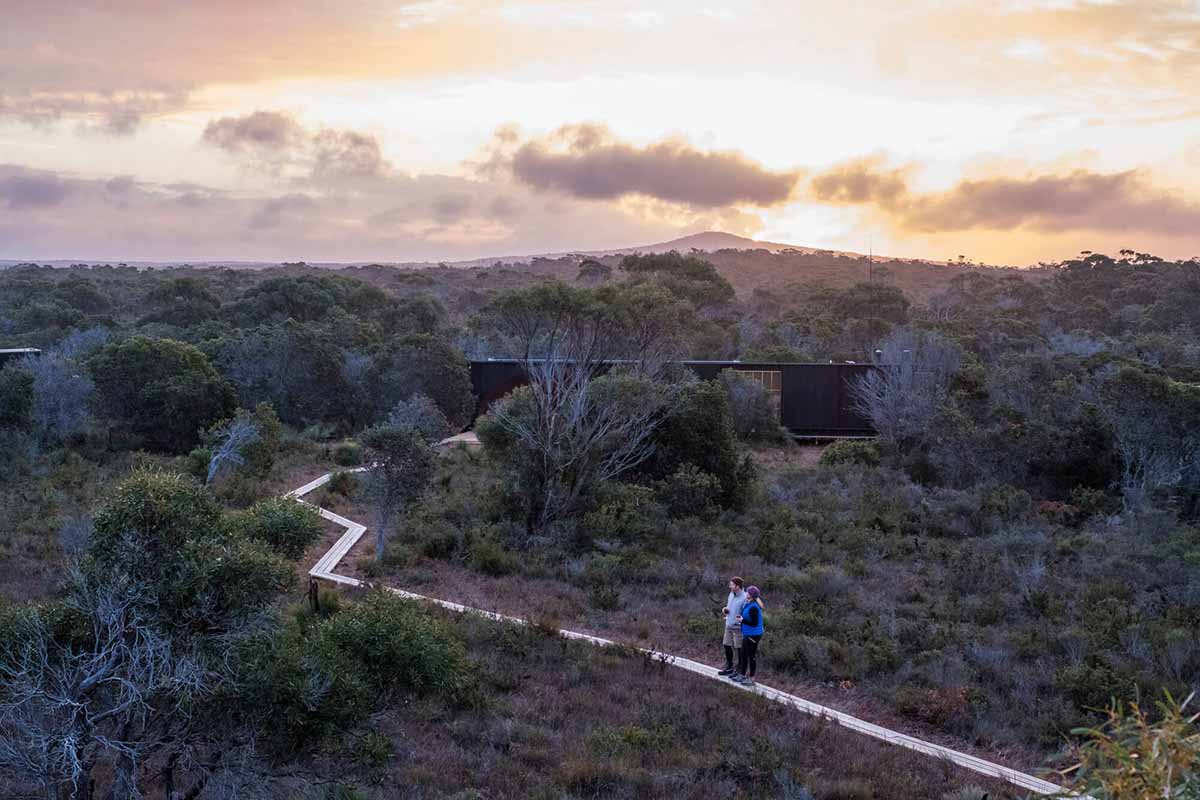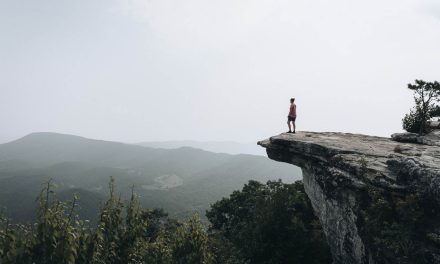For around 70,000 years, the first Australians have walked every corner of this ancient land. It’s no surprise that their cultures are so rich, unique and fascinating.
“Our spirituality is oneness and an interconnectedness with all that lives and breathes, even with all that does not live or breathe.”
– Mudrooroo Narogin
Whether you live in Australia or you’re visiting from overseas, it would be a damn shame to travel this awe inspiring country and not have at least some kind of experience related to indigenous culture… Even more of a shame not to meet any of the people who are still keeping those cultures alive today.
There are Aboriginal sacred sites all over Australia. This guide will focus both on Aboriginal-led tours, and on locations around the country where you can get a taste of the ancient culture in a responsible way without a tour guide.
Deeply ingrained in Aboriginal culture is the concept of passing down oral history, so by taking tours led by Aboriginal guides or with indigenous-owned companies, you’ll be contributing to the ongoing survival of their culture in more ways than one.
From visiting ancient rock art and rock engraving sites to learning about traditional bush tucker and medicine, these places and tours offer life-changing, immersive experiences.
Don’t miss this opportunity to be introduced to the world’s oldest continuous living culture, follow in the footsteps of the first Australians, and experience country through their eyes.
- Welcome to my Country
- New South Wales
- Barangaroo Aboriginal Cultural tour, Barangaroo Reserve (Sydney)
- Kings Tableland Rock Engraving Site, Blue Mountains
- Brewarrina Aboriginal Fish Traps Guided Tour
- Yapa (Mulgowan) Aboriginal art site
- Mount Grenfell Aboriginal art site
- Queensland
- Carnarvon Art Gallery, Carnarvon National Park
- Ngadiku Dreamtime Walk, Mossman Gorge
- Dreamtime Snorkel, Great Barrier Reef
- Northern Territory
- Uluru, The Red Centre
- Western Australia
- Wadjemup (Rottnest Island) Aboriginal Tour
- South Australia
- Yura Mulka Aboriginal Cultural Walk to Sacred Canyon
- Victoria
- Birrarung Wilam (River Camp) Walk, Melbourne
- Worn Gundidj at Tower Hill, Great Ocean Road
- Rock Art Sites, Grampians National Park
- Tasmania
- Wukalina Walk, Bay of Fires
Warning: Aboriginal and Torres Strait Islander readers are advised that this publication may contain images, voices and names of deceased persons.
Editors Notes: At any sacred site, please ensure you adhere to the advice of your guide and be respectful of their rules respectfully. If you’re not travelling with a guide, you should generally avoid touching anything and definitely do not remove anything. In most places there will be signs with any further advice.
I’ve made every effort to approach this guide in the most sensitive and culturally responsible way possible. If you notice any issues, please leave a comment at the bottom of the article and I will do everything I can to address them immediately.
A few of the experiences listed below are contributions from other travel bloggers from around the world (see the bottom of each section for their details). A huge thanks goes out to all of them for sharing their experiences. If you’re a blogger and have something new to contribute, please get in touch.
Welcome to my country
New South Wales
Barangaroo Aboriginal Cultural tour, Barangaroo Reserve (Sydney)
One of the best tours to take in Sydney to learn about the aboriginal culture is the Barangaroo Aboriginal cultural tour. Barangaroo Aboriginal cultural tour is conducted in the Barangaroo reserve, which is named after a powerful leader Barangaroo. Being from the Cammeraygal clan of the Indigenous Australians, Barangaroo was of significant influence during the European colonisation era.
The cultural tours are led by aboriginal guides who have a lot of in-depth knowledge about their culture. There are two tours that are run every day, one in the morning and the other in the evening. With a duration of 1 hour and 30 minutes, the tour guide takes the visitors through different parts of Barangaroo reserve showcasing the history and the culture.
The guide spoke about the native plants that are in the reserve and how they are used by the aboriginal community. There are around 75000 species of plants and trees in Barangaroo reserve. The best part of the tour is that the entire group is engaged during the tour by the guide where the visitors speak and share their personal experiences and knowledge about the aboriginal history as well.
This was submitted by Raksha Nagaraj from Solo Passport. Follow her adventures via her blog or Instagram.
Need to know
At the time of writing, Adult tickets for the 90 minute Barangaroo Aboriginal Cultural Tour are $36.30 and children under 17 are $16.50 (a senior discount is available). Tours can be booked online.
Kings Tableland Rock Engraving Site, Blue Mountains

According to local scholars, the Blue Mountains featured plentiful resources that made it favourable for early human occupation. They believe that the Central Blue Mountains formed a neutral ceremonial boundary between the lands of the Dharug people on the plain and the Gundungurra of the river. There are hundreds of Aboriginal sites scattered throughout the Blue Mountains, some of which are well known and able to be visited.
The oldest site of Aboriginal occupation in the entire Sydney basin is located in Wentworth Falls. Kings Tableland has been dated at 22,000 years, and excavations found over 3,000 artefacts present. The huge stone platform has a virtually 360-degree view of the mountains and plains, and it is from here the Gundungurra watched the approach of the first Europeans to cross the mountains. The platform is covered with over 150 grinding grooves and numerous waterholes.
Beneath the platform is the second part of this site, a large rock shelter that features a number of animal tracks carved into the rock walls. There is one pair which are obvious, but the others require careful inspection to find.
This was submitted by Holly from Best of the Blue Mountains. Follow her adventures via her blog or Facebook page.
Need to know
The Kings Tableland site is located very close to a residential area, and there have been issues in the past over access to the site crossing private property. Access is from a dirt track at the end of Queen Elizabeth drive, which isn’t a wide road so if you have a vehicle it is best to park it on Tablelands Road and walk down. A short way along the track are information signs directing visitors to the parts of the site. The walk to the site itself is quite short, the walk from Tablelands Road to the track is longer. This is an exposed location on the top of the ridge, so sun protection is advisable in the heat of the day.
Brewarrina Aboriginal Fish Traps Guided Tour, Brewarrina

Almost in the centre of the New South Wales outback town of Brewarrina, there’s an incredible relic of Aboriginal culture that you’ve likely never heard of. The Brewarrina Fish Traps are similar to others that may be better known like the Budj Bim traps in Western Victoria, but maybe the biggest difference is that these ones are still in use by the local Aboriginal community.
Although a quick Google search will tell you that these traps are thought to be around 40,000 years old, there seems to be some uncertainty about their true age. The most interesting part of the guided tour here for me, though, was our guide’s assertion that it doesn’t matter how old they are. I get the sense that there’s some frustration around the constant talk of Australia’s indigenous culture as something that was, when in fact it’s still very much alive.
At the time of our visit to Brewarrina, there’d been consistent heavy rains that meant the fish traps were underwater and could neither be seen by visitors or used by the local people. You might think that this would have made for a pretty boring tour, but I’m happy to say it was actually one of the most interesting cultural tours I’ve ever done. The guide spoke so passionately and taught us so much about the local Aboriginal culture and history that the fish traps became a background theme that tied his stories together.
While you can of course visit the Brewarrina Fish Traps without doing the tour, I’d highly recommend paying the small price to see them through the eyes of the traditional owners.
Need to know
Should you be unable to book a tour at a time that suits or maybe just prefer to have a quick look at the fish traps, you’ll find them just off the main street of Brewarrina, near the corner of Darling Street and Doyle Street (immediately to the north of Brewarrina Aboriginal Cultural Museum).
Yapa (Mulgowan) Aboriginal art site, Gundabooka National Park

The walk to the site is a rugged boulder-strewn trail through unspoilt outback bushland, surrounded by views of the Gunderbooka Range. Do watch out for snakes, but if you’re lucky enough to look up at the right time you can spot pink cockatoos and hooded robins. This is one special place.

Need to know
Length: 1.4 km
Time: 1.5 hrs
Grade: Moderate- Difficult / Grade 5 (according to the Australian Walking Track Grading System).
Style: Return
Access: Access is via Ben Lomond Road, Off Kidman Way. The turn-off is 49km south of Bourke or 112 km north of Cobar. Once on Ben Lomond Road (a rugged dirt track that can be impassable after heavy rain), continue for 7.5 km to the signed turn-off to the Heritage Site. The beginning of the walk is easy to find at the picnic area.
Further Info: Please show respect and help respect the site by staying on the platform. This is a remote location so make sure you’re prepared for all possibilities by wearing appropriate clothing and carrying water and appropriate equipment.
Mount Grenfell Aboriginal art site, Mount Grenfell Historic Site

A short and easy walk among Cyprus Pines and Mallee will lead you to three separate rock overhang galleries. There are so many paintings here that in some places they’ve been layered on top of each other over time. A mixture of hand paintings, where people (often children) have used their mouths to blow pigment over their hands to create a stencil, and drawings made with red, yellow or ochre pigment. The diversity of the paintings is broader than we can see in most places, from human and animal figures to waterways, land and medicine. This was a meeting place for the Ngiyampaa People, where they would hold ceremonies, share stories, pass on knowledge, laugh and, like all humans, argue.
There’s a 3-kilometre, well-marked circuit trail here but if you’re not keen on a walk in the outback heat, you can just take in the three galleries and return. The walking trail starts from the second picnic area, the road to which seems to often be gated, so be prepared to add an extra 500 metres to the walk if you find the gate closed.
Need to know
This is an easy walk on a well marked and mostly paved trail. The walk can be anywhere from 600 metres return to 3.5 kilometres, depending on whether the gates are closed and whether you decide to do the circuit walk or just take in the galleries and return directly to the picnic area.
The turn-off for Mount Grenfell Historic Site is about 40 kilometres west of Cobar on the Barrier Hwy. Turn right at the signed entrance (onto Pulpulla Road) and follow it all the way to the picnic area. This is a remote location so make sure you’re prepared for all possibilities by wearing appropriate clothing and carrying water and appropriate equipment.
Queensland
Carnarvon Art Gallery, Carnarvon National Park

Need to know
Ngadiku Dreamtime Walk, Mossman Gorge

Need to know
Dreamtime Snorkel, Great Barrier Reef

Need to know
It includes all equipment required for the snorkel, even an option wetsuit or lycra suit. You’ll just need to bring swimmers, suncreen, a hat, sunglasses, and a change of clothes for the trip back.
Northern Territory
Uluru, The Red Centre

Amongst the world’s largest single rock monoliths, this rock has a lot of names, like Ayers Rock. However, it’s known more popularly by its traditional name – Uluru.
Located in the Red Center of the outback, it is one of the most well-known travel destinations in Australia. Many first-time visitors considered visiting the rock a pilgrimage, due to its deep connection with Australia’s indigenous people. Not only is the giant rock was treated as a natural wonder and the lifeline of the native tribes, but it was (and still is) also a sacred site that is respected and protected.
To learn more about the relationship of the indigenous people with Uluru, hop on a truck on a 3-day outback camping tour and explore the Uluru-Kata Tjuta National Park. The tour kicks off from Alice Springs and covers a number of locations including Uluru, Kata Tjuta, and Kings Canyon. The national park covers an area of 1,326 square kilometres with red desert, dramatic rock formations, and unique fauna and flora. Take a walk around the base of Uluru and explore various sites that provide fresh water, food sources, and shelter to the native people.
The Uluru Cultural Center introduces more about the importance and history of the rock and explained why the authorities and native people strongly request the visitor to not climb Uluru, for both spiritual and safety reasons. Apart from Uluru, the hiking, camping, and star-gazing experiences will guarantee many outdoor activity lovers the tour is an unforgettable one.
This was submitted by Kenny from Knycx Journeying. Follow his adventures via his blog or Facebook page.
Need to know
Western Australia
Wadjemup (Rottnest Island) Aboriginal Tour

Need to know
South Australia
Yura Mulka Sacred Canyon, Flinders Ranges

This site in Flinders Ranges will give you a unique Aboriginal cultural experience. This trip comprises a 2km easy to moderate walk over rough terrain. However, if you wish to venture into the Sacred Canyon, you can only access the place by a tour led by an Adnyamathanha guide. A skilled Yura guide will be accompanying you for an amusing and educational trek.
As you walk down a dry river bed towards an aboriginal engraving site, your Yura guide will discuss how the ancient sandstone carvings were done and what they represent.
This was submitted by Kate from Here Goes Kate. Follow her adventures on her blog or Instagram.
Need to know
Book this tour now through Viator Travel
Walk Distance: 2 km return
Walk Grade: Easy / Grade 1 (according to the Australian Walking Track Grading System).
Further Info: Access to the Sacred Canyon is ONLY permitted when accompanied by an Adnyamathanha guide.
Victoria
#Birrarung Wilam (River Camp) Walk, Melbourne

Need to know
Tours can be booked online via the Koorie Heritage Trust.
Worn Gundidj at Tower Hill, Great Ocean Road

Need to know
Rock Art Sites, Grampians (Gariwerd) National Park

There are Aboriginal rock art sites scattered throughout Victoria’s Grampians (Gariwerd) National Park. Some are purposefully hidden from the public but there are a handful that tourists can easily visit. If you’re staying in Halls Gap, the Visitor Centre will be able to help with a full list, but we’ve written about two sites in the Northern Grampians that are well worth a visit and are very kid friendly – the Gulgurn Manja and Ngamadjidj Shelters.
The sites in the Grampians aren’t as impressive as some of those in outback New South Wales and especially those in Northern Queensland and the Northern Territory, but they still spark the imagination and are even just worth visiting for the incredible surrounding landscape.
Need to know
Tasmania
Wukalina Walk, Bay of Fires

Tasmania (also known as lutruwita) isn’t widely known for it’s indigenous cultural attractions, but this multi-award winning 4 day walking and cultural tour is enough to make up it. The tour is guided (and the company owned) by the local Palawa people, who can’t wait to have you walk with them on a tour of their traditional homelands.
Guides will pass down generations of knowledge and stories to visitors, as they walk the lands of Wukalina (Mt William National Park) and Larapuna (Bay of Fires) in north eastern Tasmania. There are two main days of walking but there’s also plenty of time for sharing stories, cultural activities, and experiencing traditional foods. The nights are spent between architecturally designed domed huts and a restored lighthouse keepers cottage at the Bay of Fires.





